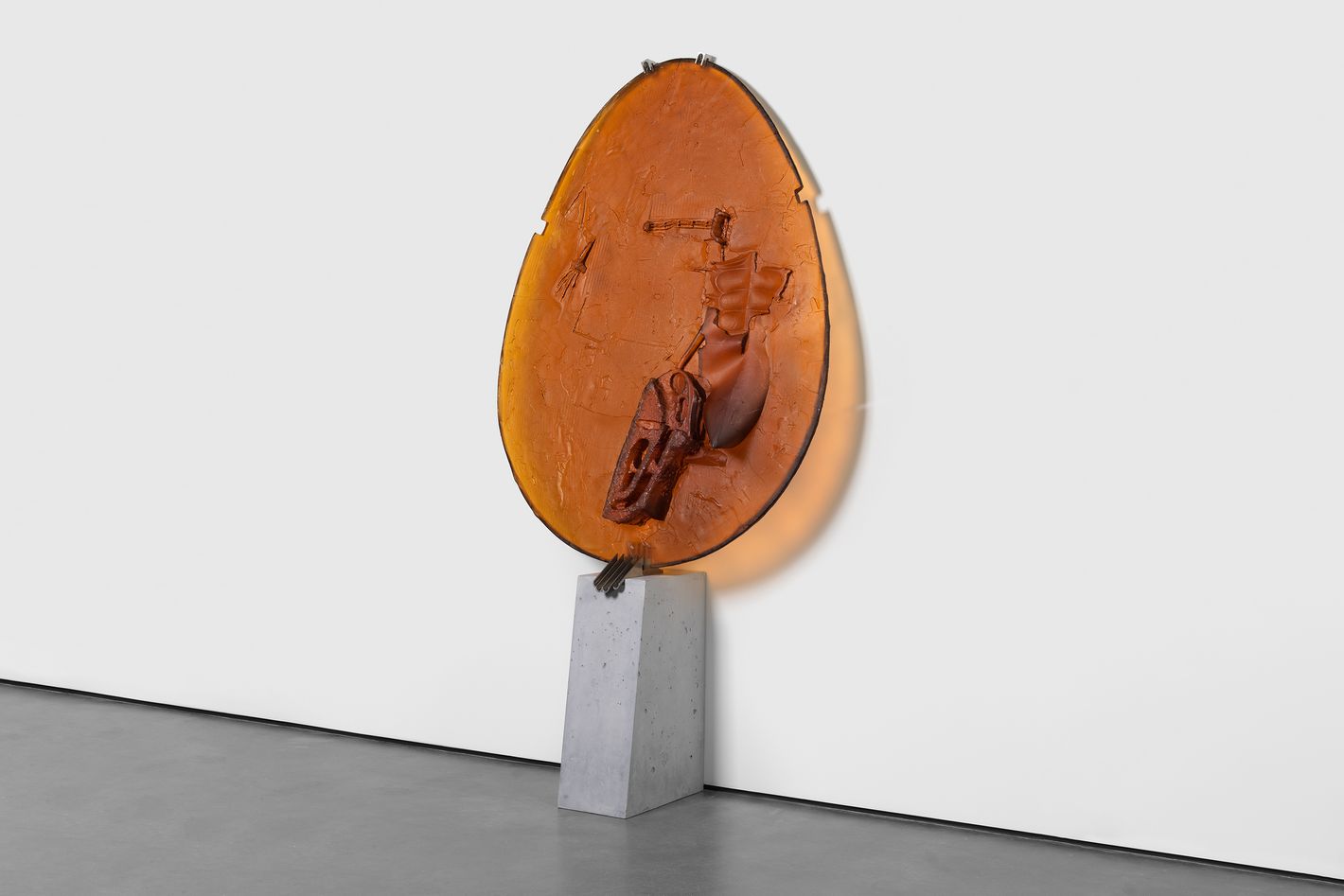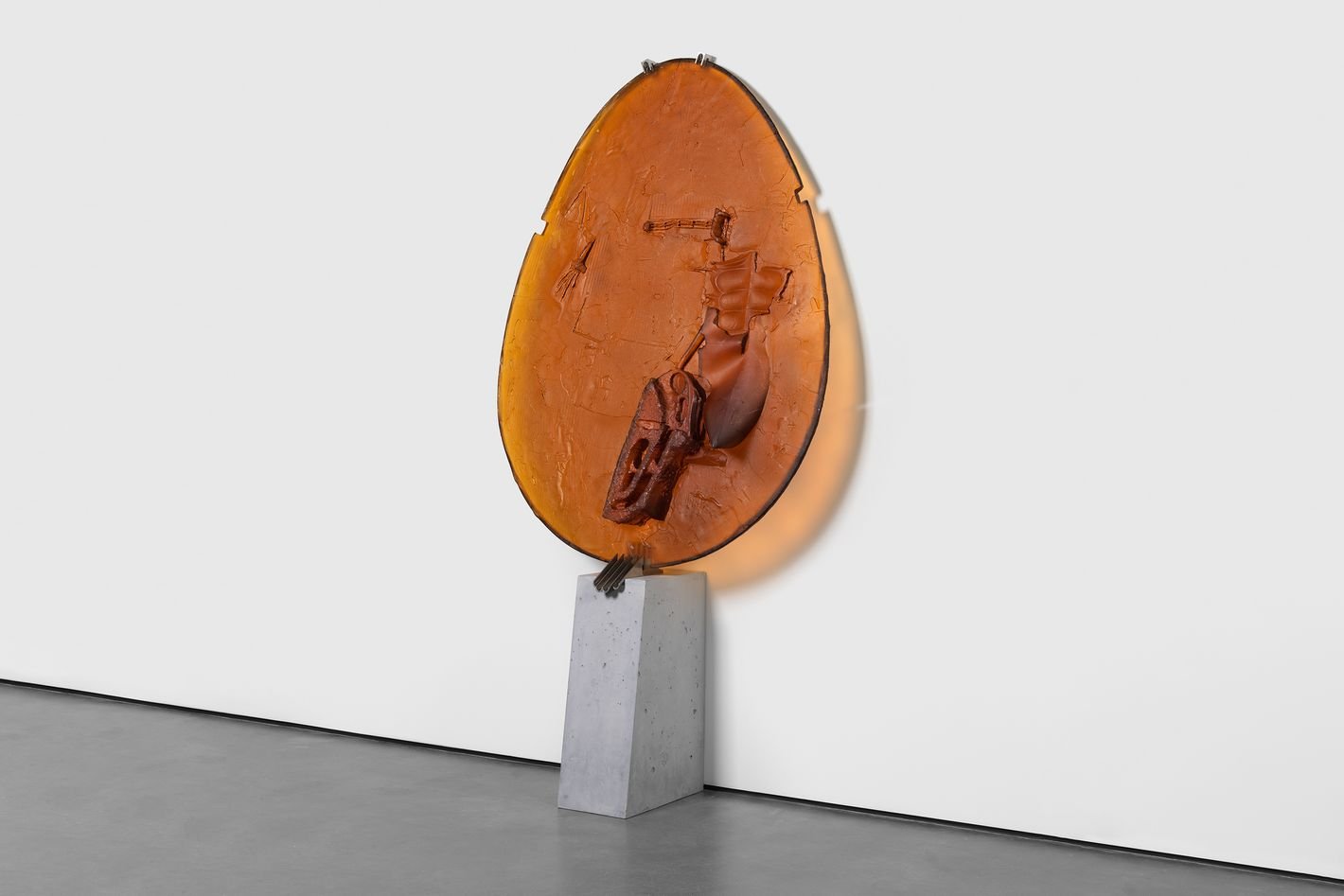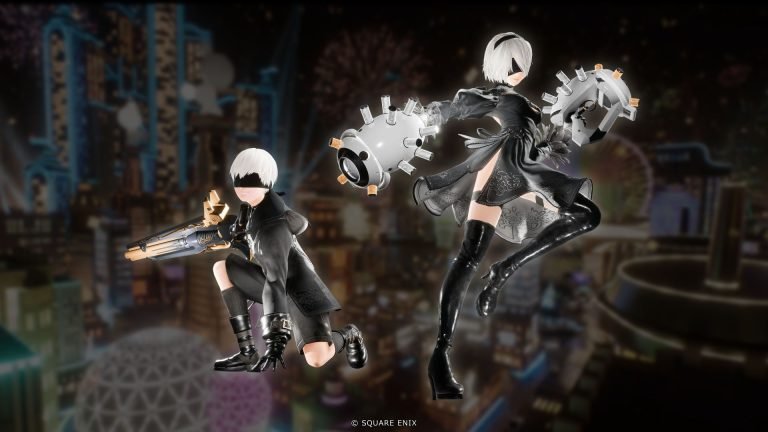
The Romanian artist Andra Ursuța’s new show at David Zwirner Gallery, Retina Turner, consists of sixteen large ovoid slabs of cast glass — her “Private Dancers.” Each encases a spectral, half-formed figure that appears to be partially submerged beneath the sculpture’s surface: a skeleton hand, a spinal column, other remnants. They are like fossils of an alien species, artifacts of a civilization that died mid-sentence amidst some volcanic catastrophe. They represent a double exposure of loss and endurance, strange archaeology and cold prophecy.
The various lineages of Ursuța’s work are unmistakable. She has taken the oval format from Lucio Fontana’s egg-shaped paintings, and like Fontana she shares the urge to turn the oval into a portal, a cosmic slit — but while Fontana gestured toward infinity, Ursuța seems overwhelmed by historical fatigue. Like H.R. Giger, Ursuța engineers an anti-heroic vocabulary where ornament functions as wound and polished surfaces feel diseased. As with Matthew Barney, she treats myth as theater, each object a prop in a play without a script. And like her Zwirner stablemate Huma Bhabha, she builds hulking figures out of rubble and refuse — monumental yet grotesque and alive. The difference is that Ursuța’s slabs insist on fragility. The glass might shatter.
The New Museum’s Massimiliano Gioni has perceptively written that Ursuța presents “a stratification of references to the past and the future.” Her art anticipates a future archaeology of ruins. Each slab operates like a sedimentary layer of personal grief, vestiges of vast killing fields. The past and future collapse into each other, leaving us standing on shifting ground.
In some cases, Ursuța has fused and cut tubes of glass into irregular, patterned surfaces. Bioluminescent color is embedded into the material rather than applied. The results feel both extraterrestrial and natural, like giant spores. The bases are concrete, and each structure also sports metallic hardware that pin the work in place like an ancient insect. These civic footings carry the architecture of socialist monumentality and New York sidewalks, evoking both town square and cemetery, utopia and capital.
Ursuța has said, “Disaster is an ongoing process, not just a specific event.” Collapse, for her, is a permanent condition, which is what she’s trying to evoke, rather than any narrative. “We can never fully understand the context in which something is made,” she has said, “we’re all just making things up and trying to construct a story around it.”
And yet for all the show’s muscular strength, it has made remarkably little noise. Perhaps the space is partly to blame: In Zwirner’s antiseptic galleries, Retina Turner feels entombed in its own majesty — a kind of crystalline Hall of Valhalla, polished, mournful, and static. Everything here is sealed off, self-contained, almost embalmed. (As it happens, Ursuța has another show at Dakis Joannou’s Slaughterhouse institute on the Greek island of Hydra, where her proto-apolcayptic pieces seem more at home amidst sea and stone and sun.)
What stays with me in Ursuța’s show is her refusal of triumph. The presentation feels almost too much — one object follows another until we are nearly worn down. Yet each discloses a damaged self in oblique fragments, a dramatization of weakness. Ursuța insists on form even when the form is broken. The works don’t preach myth; they watch myth disintegrate. Each of these reliquary sculptures reminds us that art can register loss without nostalgia, and sadness without despair.

